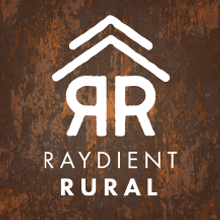Return of the Beaver

Have you heard (or noticed)? Beavers are back in the Southeastern United States! Learn more about these furry mammals and their contributions to healthy habitats.In years past, few animals were more harassed than the beaver.
They were trapped for their fur, almost eradicated because of invasive dam creation and almost went the way of the now extinct Dodo bird.
Today, there has been a resurgence of these animals, and research has revealed some interesting details about them.
Biological Facts
Beaver are mammals, members of the rodent family and are semi-aquatic animals.
They can reach lengths of more than three feet and have densely furred bodies. They also have webbed feet that lend to their unique adaptation to their watery environment.
Their tails are flat, furless and scaly and are used to help propel them when swimming. They also serve as a danger alert by creating a loud sound when they are used to slap on the water.
After the tail slap, signaling danger, the beaver can either stay submerged for up to 15 minutes or retreat to their lodge.

One of my favorite places to hunt deer is an isolated spot on the Saluda River in Greenville county, South Carolina.
I prefer the morning hunts and the favorite spot involves accessing by canoe. This necessitates hitting the water prior to dawn.
Numerous times, I have been startled by beaver swimming close to the canoe in the dark and slapping their tail on the water as a danger alert. Needless to say, any such loud disturbance on a dark river can speed up circulation!
Beavers eat the inner bark (cambium) of woody plants and trees. They store quantities of these underwater so they are readily available during cold weather, especially in regions where the surface water freezes in winter.
Beaver Habitat
Beavers are now found in significant numbers on streams, rivers and ponds throughout the U.S. The only exception might be in a few deep-south states.
A similar but smaller aquatic animal, the Nutria, was imported from South America and is classified as an invasive species in some of these southern states. Some Nutria escaped captivity, and now there is a bounty on them because they eat the roots of aquatic vegetation and wreak destruction on some waterways.

Beavers construct lodges of logs, mud and rocks. These lodges have underwater entryways that make it possible for the animals to enter and exit unseen from above. Inside, the lodges have raised benches where the beaver live and raise their kits.
Various-sized ponds are created by beavers. They construct dams of wood and mud that back up water to considerable depths and their lodges are constructed where they are not accessible from land.
Unfortunately, their dam-building capabilities cause conflicts with mankind. They occasionally flood roads, agricultural property or valuable timber resources, and the dams have to be destroyed.
As a testament to their tenacity, they often rebuild the dams in a matter of days.
Additional Value of Beavers
In former times, beaver pelts were valued for their use as furs or for felting for beaver hats. Trappers in western states almost eradicated the species, but after the fur trade cooled off, they rebounded and were transplanted into many eastern states, and now there is a healthy population throughout the U.S. and southern Canada.
Another benefit of this species is flood control.
Some areas that were previously prone to flooding have benefited from the many beaver ponds that help to disperse the flood waters and reduce the danger of flooding.
Beaver Habits
Beavers are monogamous, typically remaining with one partner for life.
They usually raise about 4 or 5 young (Kits) annually, and they stay with the parents for two years or longer before moving to their own lodge. The gestation period is approximately 4 ½ months. The young are weaned after about 6 weeks.

Beavers are primarily nocturnal animals, but like many other animals, they are also crepuscular in nature.
This means they are more active at night or in the early morning or late evening low-light periods. They have poor vision and rely heavily on their sense of smell and hearing. They rarely venture more than 20 feet from the water.
They have a special membrane that protects the eye when underwater, but allows some vision. It is called a nictitating membrane.
Final Thoughts
Our wildlife community of humans and animals has benefited from the resurgence of this industrious animal.
We can be thankful that our wildlife management agencies have seen fit to restock these animals in some of the areas where they did not previously exist.
I, for one, welcome back beavers to the South!





.jpg?width=100&height=100&name=IMG_1638%20(2).jpg)





Your email address will not be published. Required fields are marked*